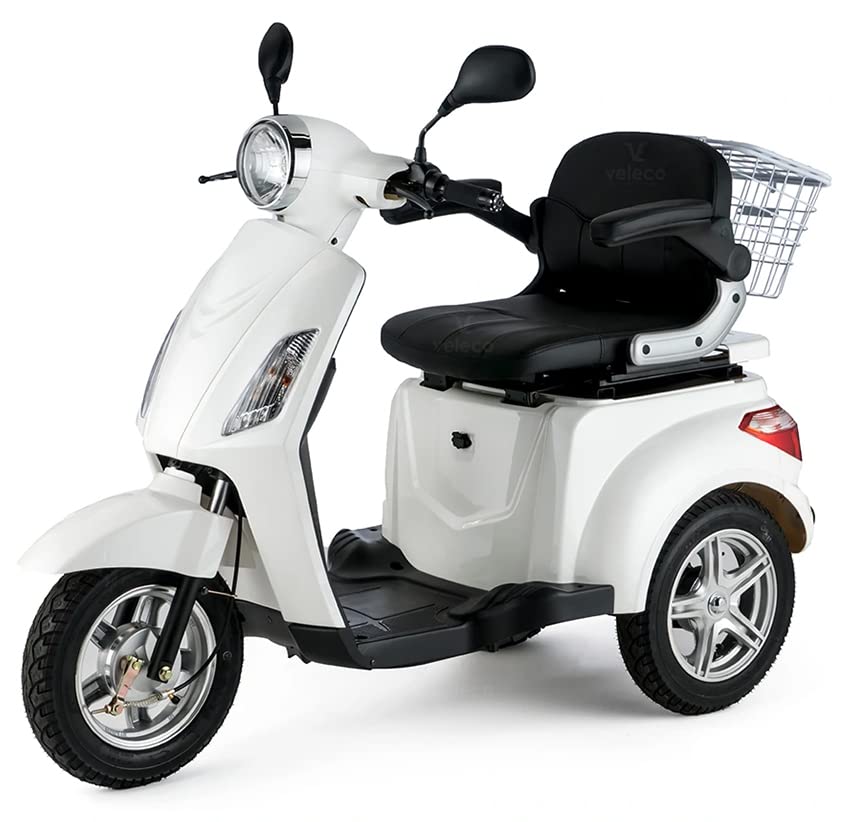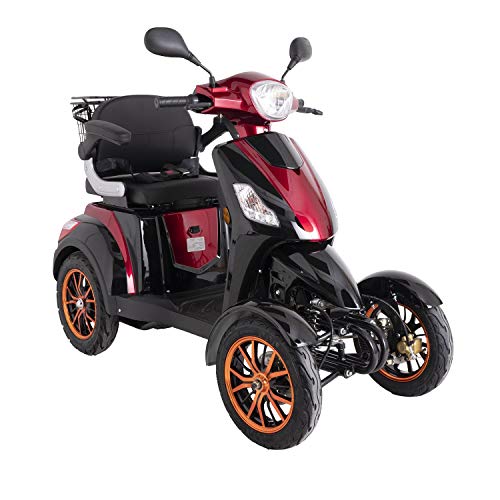5 Laws To Help The Mobility Devices Industry
페이지 정보
작성자 Rudolf 작성일24-12-06 20:12 조회11회 댓글0건관련링크
본문
 Fleet Management and Smart lightest electric mobility scooter
Fleet Management and Smart lightest electric mobility scooter Smart mobility offers alternative transportation options to private cars and encourages carpooling. It also enhances sustainability by reducing traffic and pollution.
Smart mobility offers alternative transportation options to private cars and encourages carpooling. It also enhances sustainability by reducing traffic and pollution.These systems require high-speed data connectivity between devices and roads, and centralized systems. They also require advanced software and algorithms to process data collected by sensors and other devices.
Safety
Various smart mobility solutions have been developed to solve different modern city issues, such as sustainability, air quality and road security. These solutions can help reduce pollution and traffic congestion as well as allow citizens to access transportation options. They also can improve fleet management and provide users with more convenient transportation options.
The concept of smart mobility is still relatively new and there are many hurdles that must be overcome before these solutions are fully implemented. These include ensuring the safety of smart devices and infrastructure, creating user-friendly interfaces, and adopting robust security measures for data. To encourage adoption, it's important to also know the preferences and needs of different types of users.
Smart mobility's ability to integrate with existing infrastructure and systems is an important characteristic. Sensors can be integrated into roads, vehicles and other transport elements to provide real-time information and enhance system performance. These sensors can monitor weather conditions, traffic and the health of vehicles. They also can detect road infrastructure issues, such as bridges and potholes and report them. This information can then be used to optimise routes, prevent delays and reduce the impact on motorists.
Smart mobility also has the benefit of improved fleet safety. With advanced driver alerts and collision avoidance systems, these technology can reduce the risk of accidents caused by human error. This is crucial for business owners whose fleets are used to transport goods and services.
Smart mobility solutions reduce carbon dioxide emissions and fuel consumption by facilitating a more efficient use of transportation infrastructure. They also can encourage the use Collapsible Electric Mobility Scooter vehicles, which could result in a reduction of pollution and cleaner air. In addition, smart mobility can provide alternatives to private car ownership and encourage the use of public transportation.
As the number of smart devices continues to grow, there is a need for a comprehensive data security framework that can guarantee the privacy and security of the data they collect. This requires setting clear guidelines for what information is taken, how it's used, and who it is shared with. It also involves implementing effective security measures, regularly re-updating systems to protect against new threats, and ensuring transparency regarding the handling of data.
Efficiency
There's no question that the urban mobility system is in need of a serious overhaul. Pollution, congestion and wasted time are just a few things that could negatively impact business and quality of life.
Companies that offer solutions to the challenges of modern transportation and logistics will be poised to profit from the rapidly growing market. However they must be able to incorporate technological innovation that will assist in solving key issues like traffic management, energy efficiency, and sustainability.
The idea behind smart mobility solutions is to make use of various technologies in vehicles and urban infrastructure to improve the efficiency of transportation and reduce the amount of emissions, accidents, and ownership costs. These technologies generate a large amount of data, and need to be linked to be analyzed in real-time.
A lot of the technologies that are used in transportation come with built-in connectivity. Ride-share scooters that can be unlocked and paid for through QR codes or apps, autonomous vehicles, and smart traffic lights are a few examples of this kind of technology. Sensors, low-power wireless networks (LPWAN) cards and eSIMs can be used to connect these devices with each other and centralized system.
Information can be shared instantly and actions can be quickly taken to minimize issues like traffic jams or road accidents. This is possible thanks to advanced machine learning algorithms and sensor data that analyze data in order to identify patterns. These systems can also predict trouble spots for the future and give drivers guidance on how to avoid them.
Many cities have already implemented smart solutions to mobility that reduce traffic congestion. Copenhagen is one of them. It uses intelligent traffic signals that place cyclists ahead of other motorists during rush hour to reduce commute times and encourage biking. Singapore has also introduced automated buses that use a combination cameras and sensors to guide them along specific routes. This helps optimize public transportation.
The next phase of smart mobility will be based on technology that is intelligent, such as artificial intelligence and massive data sets. AI will allow vehicles to communicate and interact with one another, as well as the surroundings around them. This will decrease the requirement for human driver assistance while optimizing vehicle routes. It will also facilitate intelligent energy management, anticipating renewable energy generation and assessing possible risks of outages and leaks.
Sustainability
Traditionally, the transportation sector has been affected by inefficient traffic flow and air pollution. Smart mobility is a solution to these issues, and offers a range of advantages that can enhance the quality of life of people. It lets people take public transport instead of their own vehicle. It helps users to choose the most effective route to their destination and reduces congestion.
Additionally smart mobility is also eco-friendly and provides sustainable alternatives to fossil fuels. These options include car-sharing, ride-hailing, and micromobility alternatives. They also allow users to drive electric mobility scooter portable vehicles and integrate public transportation services into cities. They also decrease the need for private cars, reducing CO2 emission and improving air quality in cities.
However the physical and digital infrastructure required for the implementation of smart mobility devices can be expensive and complex. It is crucial to ensure that the infrastructure is secure and safe and able to stand up to any hacker attacks. In addition, the system needs to be able to meet demands of the user in real time. This requires a very high degree of autonomy in decision-making that is difficult because of the complexity of the problem space.
In addition, a huge number of stakeholders are involved in designing smart mobility solutions. These include transportation agencies, city planners, and engineers. all terrain electric mobility scooter of these stakeholders must be able to collaborate. This will enable the development of more sustainable and better solutions that will be beneficial to the environment.
Unlike other cyber-physical systems, like pipelines for gas, the failure of smart sustainable mobility systems can have significant environmental, social and economic impacts. This is due to the necessity to match supply and demand in real-time, the storage capabilities of the system (e.g. energy storage), and unique combination of resources within the system. Additionally, the systems have to be able manage large levels of complexity as well as a large range of inputs. They require a distinct IS driven approach.
Integration
With the increasing focus on sustainability and safety fleet management companies have to adopt technology to meet these new standards. Smart mobility offers better integration efficiency, automation, and safety, as well as boosting performance.
Smart mobility encompasses various technologies and includes everything that is connected. Ride-share scooters that can be accessed through an app are one example as are autonomous vehicles, and other options for transportation that have emerged in recent years. But the concept also applies to traffic lights, road sensors and other elements of the city's infrastructure.
The goal of smart mobility is to create integrated urban transport systems that improve the quality of life for people improve productivity, decrease costs, and have positive environmental impact. These are often lofty goals that require collaboration among city planners, engineers, and experts in technology and mobility. In the end, the success of implementation will depend on the specific conditions in each city.
For example the city might need to build a larger network of charging stations for 3 wheeled electric mobility scooter vehicles, or it might require improvements to bike lanes and walkways for safe cycling and walking. It can also benefit from traffic signal systems that adjust to changing conditions, reducing congestion and delays.
Local transportation operators play a key part in coordinating this initiative. They can develop apps that allow travelers to purchase tickets for public transportation such as car-sharing, bike rentals, and taxis on one platform. This will make it easier for people to travel, and will encourage them to use more environmentally friendly transportation options.
MaaS platforms permit commuters to be flexible in their travels around the city. This is dependent on what they require at any moment in moment. They can opt to reserve a car-sharing service for a quick trip downtown, for instance, or rent an e-bike for an extended outing. These options can be combined into one application that shows users the entire route from door-to-door, and makes it easy to switch between different modes of transport.
These kinds of integrated solutions are only the top of the iceberg when it comes to the implementation of smart lightweight mobility electric scooter. In the near future, cities will need to connect their transportation systems and make seamless connections between multimodal travel. Artificial intelligence and data analytics can be used to optimize the flow of people and goods, and cities will also be required to assist in the development and production of vehicles that can communicate with their surroundings.
댓글목록
등록된 댓글이 없습니다.


